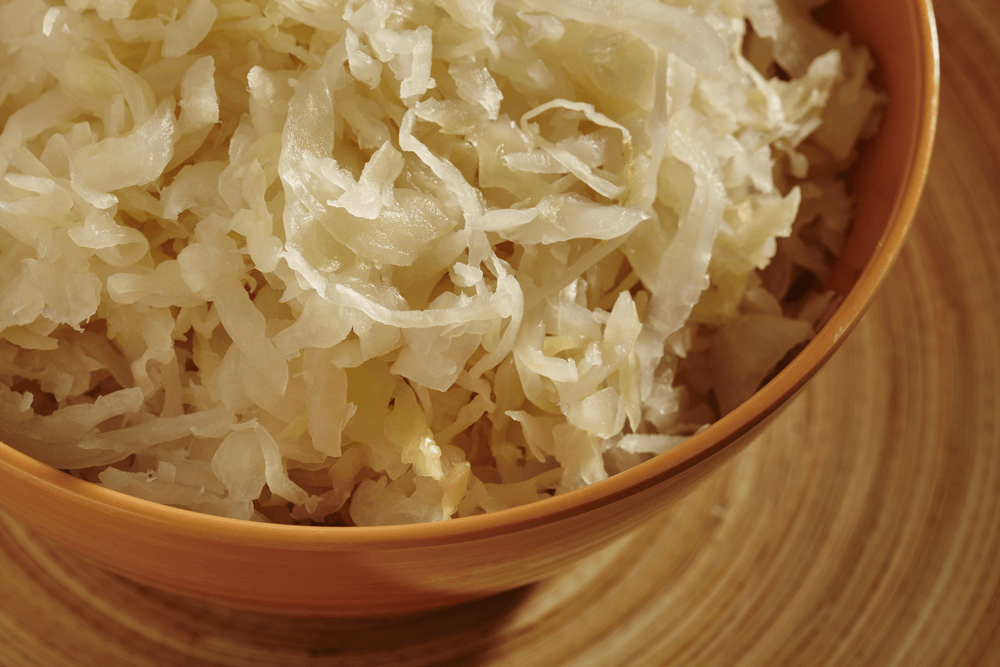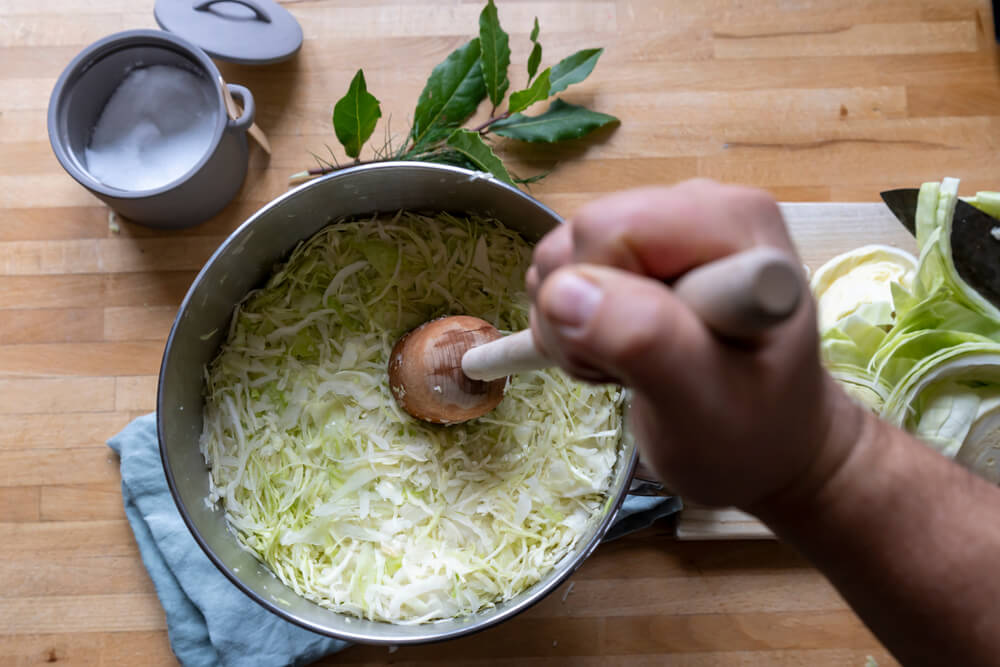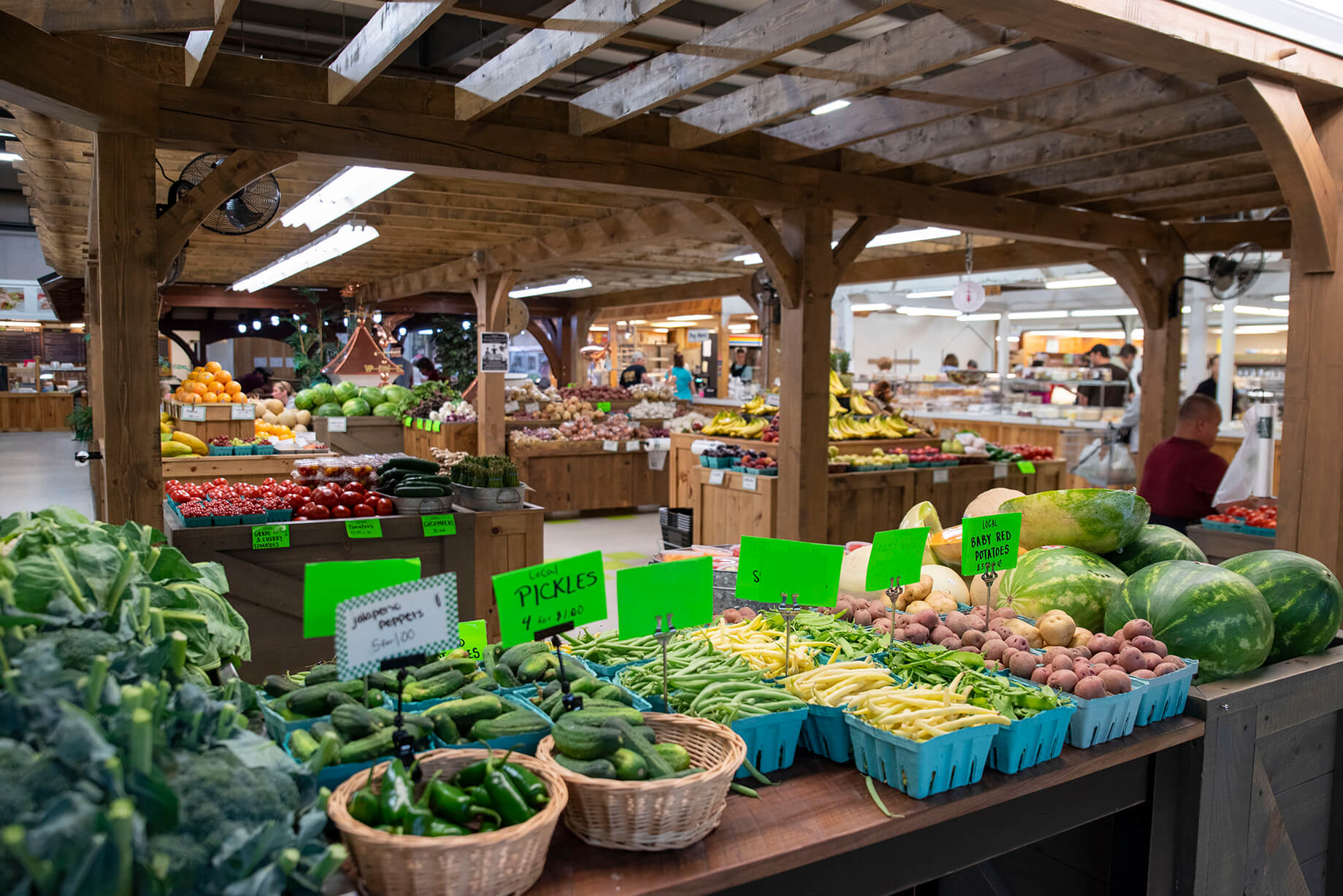There’s nothing like the smell of Amish pork and sauerkraut on New Year’s Day. If you’re from Central Pennsylvania, you know what we’re talking about.
Amish pork and sauerkraut is a staple meal in Central PA on New Year’s Day. But where did the tradition come from?
From understanding its history to tips and tricks on how to prepare it, this guide will make you a professional on Amish pork and sauerkraut and its deep-rooted tradition in the area.

Why Eat Pork and Sauerkraut on New Year’s Day?
The tradition of the New Year’s meal originated in Germany. As German immigrants – commonly referred to now as the Pennsylvania Dutch – migrated to the states, they brought with them the custom of preparing pork and sauerkraut on New Year’s Eve.
Why Pork?
The Germans believed eating pork on New Year’s Day was a guarantee of good luck as they entered the new year. The pig was considered a symbol of advancement; they were known to “root ahead” with their snout as they ate, unlike chickens and turkeys who “scratch behind.”
Following that logic, eating pork on New Year’s Day is believed to be a way of advancing yourself and your family into prosperity in the coming year.
Why Sauerkraut?
The term “sauerkraut” translates to “sour cabbage” in German – and that’s exactly what it is.
It was first developed for practical reasons; the Germans sliced up and fermented barrels of cabbage to preserve their harvest over the Winter months.
However, they also believed sliced pieces of cabbage represented the earnings they were going to accumulate in the coming year. Hence, why some PA Dutch folk say “the more kraut the better your fortune.”
Old traditions consider greens to bring in wealth as they resemble the color of money. This is another reason why cabbage and sauerkraut are considered a symbol of good fortune when eaten for the New Year.
How To Make PA Dutch Pork & Sauerkraut
The tradition of pork and sauerkraut still runs deep in central and south-central Pennsylvania. This is due mainly to the fact that these areas are heavily populated by the Amish and PA Dutch.
There are tons of pork and sauerkraut recipes online. Yet, there are few that offer the secret to achieving that Pennsylvania dutch pork and sauerkraut taste. The recipe below includes some simple tips and tricks to help you achieve the traditional PA Dutch pork and sauerkraut dish.

What You’ll Need:
- 8-10 LBS Pork: Typically, the part of the pig that is used for PA Dutch pork and sauerkraut is the Butt (or shoulder). You could also use the pork loin or pork tenderloin, but they are often easier to overcook and could result in your meat being dry. If you’re looking for some additional information about meat options, check out our blog post about types of pork cuts and how they can affect the taste of your meat.
- 3-4 LBS Sauerkraut: You can purchase canned kraut from your local Amish market, or bagged at most grocery stores. (Try making your own kraut if you’re up for the challenge! If you go this route, be sure to give yourself enough time for the fermentation process to work its magic. It takes about 3-4 weeks for your kraut to be ready to serve.)
- Salt + Pepper
- 1-2 Apples: This is what gives PA Dutch pork and sauerkraut its unique, acidic taste. You shouldn’t skip this part if you want to make true, authentic Amish pork and kraut. The quantity of apples depends on your taste preference. More apples yield a more acidic taste.
Directions:
- Preheat your oven to 350 degrees Fahrenheit.
- Rinse your pork shoulder and place in a large roasting pan.*
- Season your meat with salt and pepper.
- Rinse your sauerkraut to remove excess salt.*
- Add ⅓ of the kraut to the roasting pan.
- Peel, halve, and core apple. Place in the roasting pan with the pork and kraut.
- Cover the pan and cook for 1 hour and 30 minutes.
- Remove the pan from the oven, uncover, and add another ⅓ of the kraut.
- Cover and return to the oven for another hour.
- Remove from the oven, uncover, and add the last of the kraut.
- Cover and return to the oven for 1 more hour.
- Remove from the oven.
- Remove the apple from the pan.
- Serve & enjoy!
*This step is not necessary, but could be helpful
Preservation Techniques
One of the great things about this Amish pork and sauerkraut recipe is that it yields such large portions. After it’s cooked, pork and sauerkraut can be kept in the refrigerator for up to 5 days.
Anything that you don’t finish after that can be frozen and preserved for up to a year in the freezer. Just transfer the pork and sauerkraut into a plastic container or freezer-safe bag and store in your freezer until you’re ready to enjoy again.
When you’re ready to defrost your meal, simply move it from the freezer to the fridge and let it sit for several hours until it’s soft. When it no longer seems frozen, reheat it in the microwave and enjoy some left over good luck!
Note: Be wary of defrosting and refreezing your leftover pork and sauerkraut recipe. Doing so will impact your foods’ freshness, and could even allow harmful bacteria to develop on your food.
What to Serve With Your Pork & Kraut
Need some ideas of what to serve with your pork and sauerkraut on New Year’s Day? Below are some classic PA Dutch side dishes to serve with your meal — and even a few Amish dessert ideas to enjoy afterward!
The most common side dishes that are served with pork and sauerkraut are mashed potatoes and applesauce. These side dishes, though not exclusive to PA Dutch culture, can be prepared using Amish methods to make them just as authentic as the rest of your meal. Click here to learn what the best potatoes for mashed potatoes are to try with our pork and sauerkraut.
Simple nuances during the preparation process, such as using browned butter in your Amish mashed potatoes, can make all the difference in taste.
Make sure to also check out the Amish markets in your area to purchase some chunky homemade applesauce. The sweet apple taste helps balance the savory deliciousness of the pork and is sure to leave your taste buds satisfied!
Finish off your meal with some traditional Amish desserts. From whoopie pies to shoofly pie, there’s nothing that beats the savory taste of a homemade baked dessert. These can be purchased at your local farmer’s market, or you can check out our recent blog post to get an idea of how to make these sweet treats at home.




